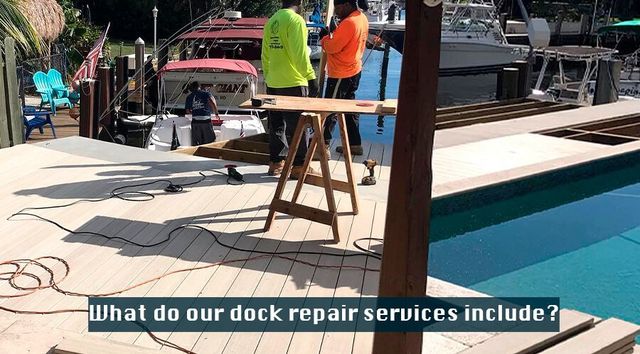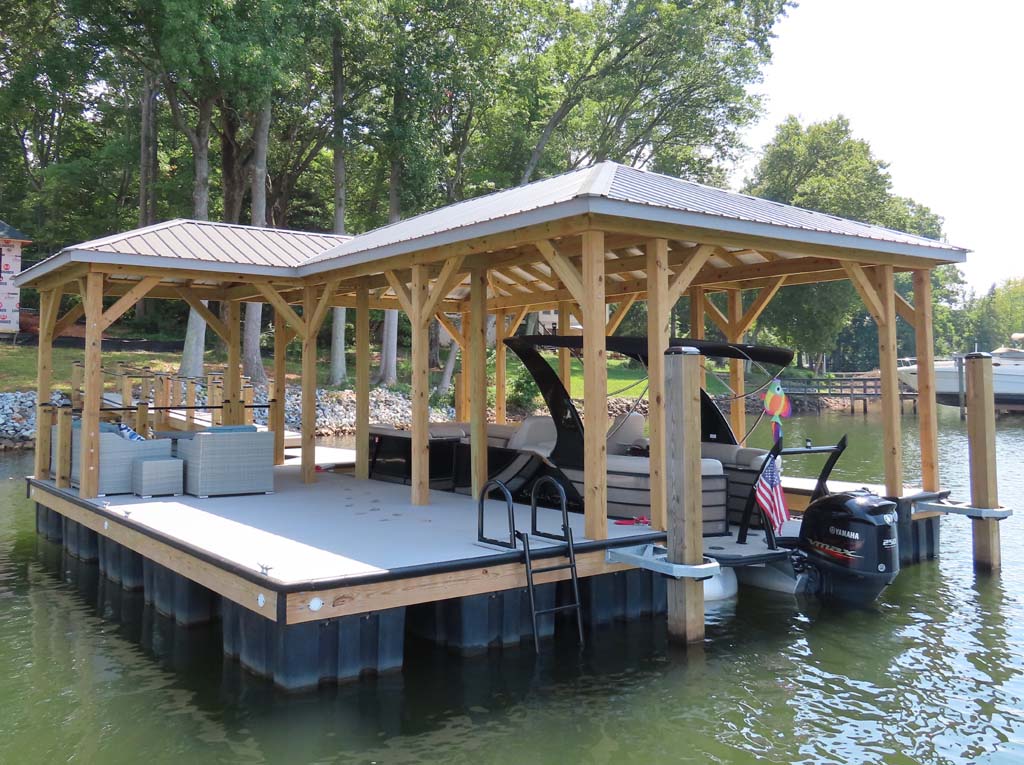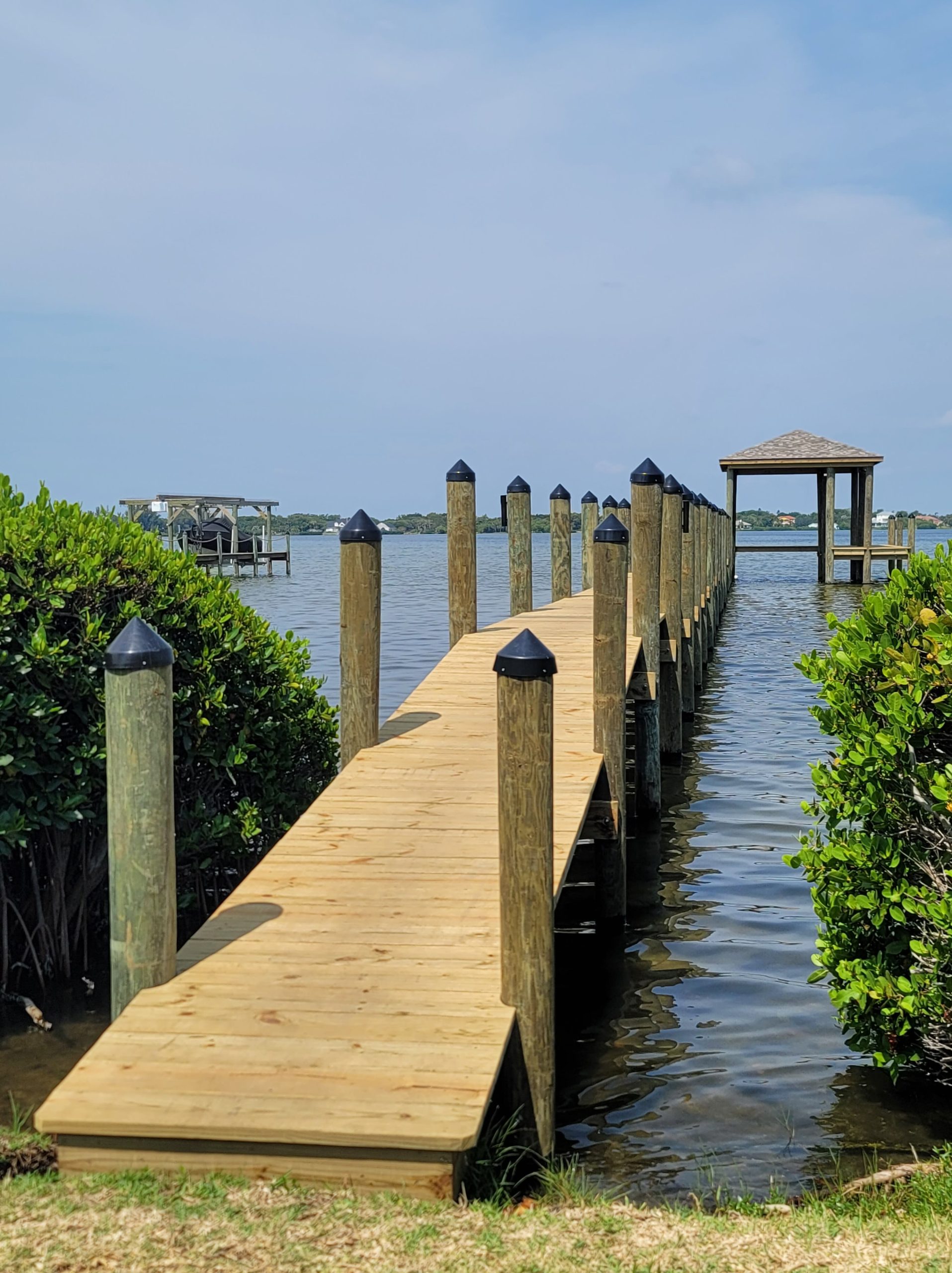Common Issues That Lead to Costly Dock Repairs
Common Issues That Lead to Costly Dock Repairs
Blog Article
Effective Dock Repair Work Techniques: Guaranteeing Structural Integrity
Ensuring the architectural honesty of anchors via reliable repair service methods is vital for the durability and security of marine facilities. This involves a multi-faceted approach starting with comprehensive inspections making use of advanced technologies like finder tools and from another location operated cars (ROVs) to spot both visible and hid problems. Consequently, choosing the appropriate fixing products, such as composite products and corrosion-resistant alloys, is vital for durability. Architectural reinforcement methods, consisting of the execution of cross-bracing systems and load-distribution plates, play an essential duty in mitigating anxiety points. However, the significance of these techniques becomes evident when discovering innovative fixing approaches and preventative upkeep methods.
Assessing Dock Damages
Examining dock damages is an essential first step in making certain the structural integrity and safety of any kind of docking center. Key aspects to analyze include the dock's structure, pilings, outdoor decking, and hardware (Dock Repairs).
Structural designers or certified assessors normally perform these assessments using specialized strategies and devices. Underwater inspections may employ sonar equipment or remotely operated automobiles (ROVs) to identify immersed damages. Over water, visual evaluations are matched by utilizing moisture meters and various other analysis devices to discover underlying concerns not immediately visible to the nude eye.

Choosing Repair Work Materials
Picking the suitable repair work products is a critical step in the dock remediation process, one that directly influences the long life and efficiency of the repaired structure. Product option need to be driven by aspects such as ecological conditions, load-bearing requirements, and compatibility with existing dock components.
Along with timber, composite products are progressively prominent as a result of their durability and reduced maintenance needs. Compounds, normally made from a blend of plastic and wood fibers, supply superb resistance to rot, insects, and UV damages. For steel docks, selecting corrosion-resistant alloys such as galvanized steel or marine-grade aluminum is vital to avoid rust and make sure structural integrity in saline water problems.
Epoxy materials and marine-grade sealants are indispensable for fixing cracks and securing joints, supplying a water resistant barrier and enhancing the dock's overall toughness. By thoroughly selecting high-grade materials, dock repairs can accomplish long-lasting outcomes, thus safeguarding against future destruction and making sure secure, dependable usage.
Structural Support Methods
Effective architectural reinforcement methods are crucial in guaranteeing the stability and long life of dock fixings. This technique is especially effective for anchors revealed to heavy loads or extreme environmental problems.
An additional necessary method is the application of fiber-reinforced polymers (FRP) These materials supply high strength-to-weight ratios and excellent resistance to deterioration, making them suitable for reinforcing wood or concrete anchors. FRP can be used in strips or sheets and adhered with epoxy materials to enhance architectural stability.
Bracing and securing systems also play an important role in architectural reinforcement. Cross-bracing, making use of metal or wood beams, can neutralize lateral pressures, minimizing swaying and activity. Anchoring systems, such as helical piers or driven heaps, offer a secure foundation by moving tons to much deeper, much more secure soil layers.
Last but not least, the combination of load-distribution plates can help distribute weight extra uniformly throughout the dock's surface, reducing localized stress and anxiety factors. These methods jointly ensure that anchors continue to be that site safe and robust, efficient in enduring the roughness of their functional atmosphere.
Advanced Fixing Methods

One more sophisticated method entails undersea welding, which permits repairs to be conducted without the need to dewater the area. This method is particularly helpful for resolving architectural concerns in immersed dock components, ensuring very little interruption to procedures. Improved welding methods, paired with robot systems, supply accuracy and integrity, consequently prolonging the lifespan of the dock.
Furthermore, cathodic protection systems are implemented to protect against rust in metallic dock frameworks. By utilizing sacrificial anodes or amazed current systems, these strategies successfully reduce the electrochemical procedures that cause material deterioration.
Last but not least, advanced monitoring modern technologies, such as structural health tracking (SHM) systems, offer real-time information on the condition of dock frameworks. These systems allow proactive upkeep and timely treatments, ultimately making certain the long-lasting structural honesty of the dock.
Maintenance and Avoidance
Maintenance and prevention are basic principles that underpin the durability and security of dock frameworks. Normal assessments are critical, allowing useful content for very early discovery of deterioration, potential weak points, and ecological effects. A proactive technique, involving regular checks for deterioration, rot, and structural changes, reduces pricey repair work and lengthens the dock's operational life.
Safety nets must include applying protective layers to metal parts to defend against corrosion and utilizing cured timber to stand up to decay. Furthermore, making sure correct drainage and ventilation can avoid water build-up, which is an usual reason for structural degradation. Integrating high quality products and sticking to supplier standards throughout construction and repair work phases likewise play vital duties in boosting sturdiness.

Educating employees in dock upkeep finest practices ensures regular application of safety nets. Leveraging technical advancements, such as drones for evaluations and sensors for real-time surveillance, can better boost maintenance efforts. By focusing on upkeep and prevention, dock owners can make certain structural honesty, functional security, and economical administration over the dock's lifespan.
Conclusion
To conclude, preserving the structural integrity of aquatic facilities demands detailed dock repair work techniques. Thorough assessments using advanced devices discover both noticeable and hid damages, while the option of ideal repair work products improves durability. Carrying out structural support methods addresses anxiety points properly. Advanced fixing techniques, paired with normal maintenance techniques, guarantee the dock remains safe and functional under diverse ecological conditions. Embracing these strategies dramatically extends the life-span and performance of aquatic facilities.
Making certain the architectural integrity of docks with efficient repair work techniques is extremely important for the long life and safety of marine centers.Picking the appropriate repair service products is an essential step in the dock reconstruction procedure, one that straight affects the long life and performance of the repaired framework.Reliable structural support methods are important in guaranteeing the stability and longevity of dock fixings. By prioritizing maintenance and blog here avoidance, dock owners can make sure architectural integrity, functional safety, and affordable management over the dock's lifespan.
In final thought, keeping the structural honesty of aquatic centers demands comprehensive dock repair work methods.
Report this page